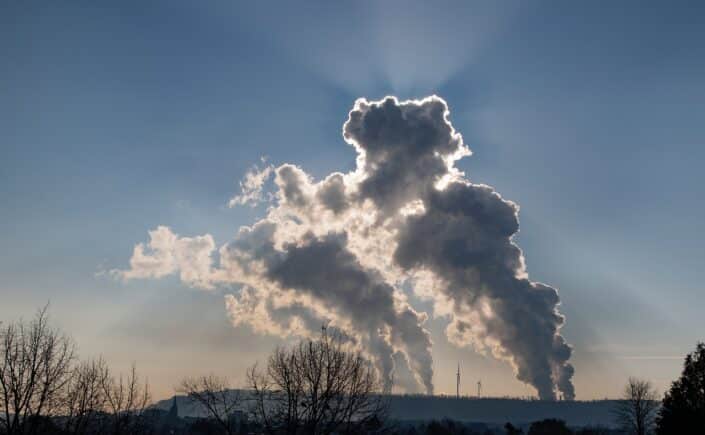The threat of climate change has prompted nations, businesses, and individuals to seek innovative solutions for reducing their carbon footprint. Among the strategies implemented worldwide, carbon markets have emerged as a crucial tool for offsetting emissions and promoting sustainable practices. John Gessin discusses the complex world of carbon markets, making it digestible for sustainability professionals, environmental enthusiasts, and business owners aiming to participate in the global movement toward decarbonization.

Addressing Climate Change
The race to address climate change has catapulted carbon markets into the spotlight as a key element of global efforts to incentivize reduction in greenhouse gas emissions. Underpinning these markets is the concept of carbon emissions offsetting – a financial instrument aimed at balancing out emissions by funding equivalent carbon dioxide savings elsewhere. But what exactly are carbon credits, and how do the various carbon credit markets operate?
Understanding Carbon Emissions Offsetting
Carbon emissions offsetting is how individuals and companies invest in environmental projects to reduce future emissions. This can include reforestation, renewable energy initiatives, or energy-efficiency schemes. The goal is to counteract one’s carbon footprint by ensuring a proportional amount of greenhouse gas reduction is happening elsewhere.
Carbon credits are the actual units of measurement that quantify the reduction of emissions. One carbon credit typically represents one metric ton of carbon dioxide preventing from entering the atmosphere. By purchasing credits, organizations effectively support projects that take carbon from the economic equation, making them carbon neutral.
Types Of Carbon Credit Markets
Deciphering the landscape of carbon markets involves understanding the difference between voluntary and compliance markets and familiarizing oneself with the mechanics of cap and trade systems.
Voluntary Carbon Credit Market
The voluntary carbon credit market operates outside the mandatory compliance systems that governments impose and is driven by corporations, individuals, and governments who voluntarily offset their emissions. It’s an unregulated market allowing entities to buy carbon credits from various projects designed to reduce future emissions. Additionally, participation in the voluntary market is often driven by corporate social responsibility goals, brand image enhancement, or preparation for future regulated carbon pricing. Examples of projects in this market include forest conservation programs, investments in renewable energy, methane capture from landfills, and community-based development projects with ancillary social benefits.
However, the voluntary market is not without its drawbacks. A lack of standardization can lead to concerns about the integrity and transparency of the carbon reductions claimed. Potential risks of greenwashing, where a company may appear environmentally responsible without making significant emissions reductions, are notable. Despite these challenges, the voluntary market is essential for pioneering new projects and emission reduction methodologies.
Compliance Carbon Credit Market
In contrast to the voluntary market, compliance carbon credit markets operate within government regulatory frameworks. These schemes are mandatory and require businesses that exceed emissions limits to offset their excess emissions by purchasing credits from other entities that have reduced emissions beyond what is legally required. Examples of such systems include the European Union Emissions Trading System (EU ETS) and California’s cap-and-trade program.
Compliance carbon credit markets have faced criticism for allowing polluters to continue emitting by simply purchasing credits instead of reducing their emissions. However, these markets play a crucial role in driving down emissions and provide a financial incentive for businesses to decarbonize. Since the introduction of the EU ETS, Europe has seen a 20% reduction in greenhouse gas emissions from regulated sectors, demonstrating the effectiveness of compliance markets.
Cap And Trade Systems
Cap and trade systems are a specific type of compliance carbon credit market where the government sets an overall limit or ‘cap’ on the amount of greenhouse gases emitted by certain sectors or organizations. Companies or entities are then allotted a certain number of emissions permits or ‘allowances’ representing the right to emit a specific amount of greenhouse gas. If a company emits less than its allowance, it can sell its extra permits to another company that may exceed its limits, thus incentivizing emissions reduction across the board. This system creates a market for carbon credits, ensuring the emission cap is upheld while allowing for flexibility among individual companies in achieving their emissions targets.
Final Thoughts
The world’s most pressing issues, such as climate change, require a collaborative effort from all stakeholders. Carbon credits are just one piece of the larger puzzle in mitigating emissions and slowing down global warming. By understanding the different types of carbon credit markets and their role in incentivizing emissions reduction, individuals and businesses alike can make informed decisions in supporting projects that align with their values and contribute to a more sustainable future.


















